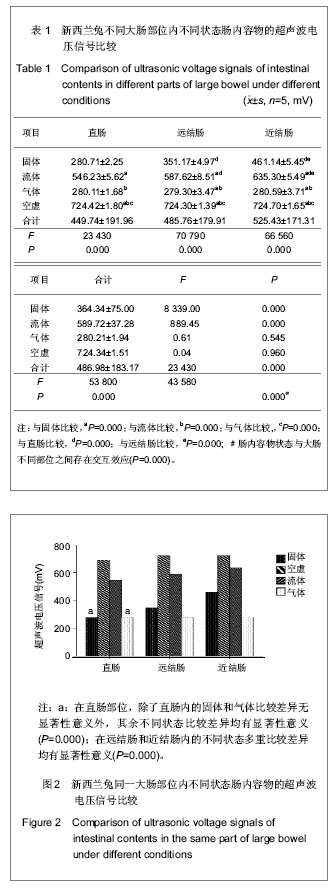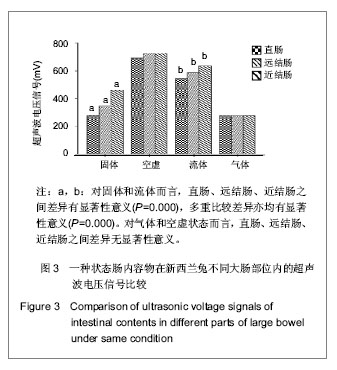| [1] |
Zhu Mingqi, Zhou Jingxu, Lin Lizhu, Chen Zeren, Liao Zhixiao .
In vitro co-culture of decellularized matrix of porcine colon with colon cancer HCT116 cells
[J]. Chinese Journal of Tissue Engineering Research, 2021, 25(10): 1533-1538.
|
| [2] |
Liu Junyan, Pan Shinong.
Anatomical changes and imaging manifestations of childhood developmental dysplasia of the hip
[J]. Chinese Journal of Tissue Engineering Research, 2020, 24(30): 4875-4881.
|
| [3] |
He Guoyu, Zhang Yonghong, Wang Dong.
Advantages and improvement strategies of Ilizarov technique in the treatment of tibial bone defect
[J]. Chinese Journal of Tissue Engineering Research, 2020, 24(24): 3870-3876.
|
| [4] |
Wang Yuan, Nie Fang, Wang Ting, Li Yan, Xu Ping.
Systematic reviews of the accuracy of musculoskeletal ultrasound in the diagnosis of lateral epicondylalgia
[J]. Chinese Journal of Tissue Engineering Research, 2019, 23(32): 5233-5239.
|
| [5] |
Zhu Xianhua, Chen Feng, Liu Chongdong, Zhou Wei, Tang Xinhua .
Dextran/poly(lactic-co-glycolic acid) microspheres combined with three growth factors promote neovascularization in ischemic lower limbs of rats
[J]. Chinese Journal of Tissue Engineering Research, 2019, 23(26): 4142-4147.
|
| [6] |
Xu Ruohao, Li Chao, Wu Ping, Li Minming, Deng Chengxin, Geng Suxia, Lai Peilong, Lu Zesheng, Weng Jianyu, Du Xin.
Bone marrow colony forming units-fibroblast in patients with chronic myelomonocytic leukemia: functions and clinical significance
[J]. Chinese Journal of Tissue Engineering Research, 2019, 23(21): 3398-3403.
|
| [7] |
Huang Jianwen, Huang Botian, Zhao Wenbin, Min Mengzhen, Li Kun, Li Shuyi, Wang Hailiang, Zhang Chao.
Polyacrylamide hydrogel, an ultrasonic coupling agent: optimization process and acoustic performance characterization
[J]. Chinese Journal of Tissue Engineering Research, 2019, 23(10): 1533-1539.
|
| [8] |
Yuan Chen, Jing Jiangxin, Liu Chunhong.
Characteristics and significance of high-frequency color Doppler ultrasound in assessing tibial nerve and its main branches of healthy adults
[J]. Chinese Journal of Tissue Engineering Research, 2018, 22(35): 5681-5686.
|
| [9] |
Wang Jin, Niu Ben, Ma Xiao-rong, Zhang Wang-gang.
Effects of recombinant human granulocyte colony-stimulating factor on CXC chemokine receptor 4 expression and chemotaxis in bone marrow microenvironment
[J]. Chinese Journal of Tissue Engineering Research, 2018, 22(33): 5268-5273.
|
| [10] |
Wang Shu-ying.
Ulinastatin combined with adipose-derived stromal cell transplantation for treatment of acute intestinal ischemia-reperfusion injury
[J]. Chinese Journal of Tissue Engineering Research, 2018, 22(29): 4601-4606.
|
| [11] |
Qu Yuan-qian, Zhou Qing, Zhang Jin, Xu San-rong.
Inhibiting colorectal cancer liver metastasis by combined injection of allogeneic bone marrow cells and lymphocytes
[J]. Chinese Journal of Tissue Engineering Research, 2018, 22(25): 4053-4058.
|
| [12] |
Xu Jia1, Gao Song2, Mo Han-you1, Shi Yu-hong1.
Seven joints ultrasonic score and superoxide dismutase measurement for assessing the activity of rheumatoid arthritis
[J]. Chinese Journal of Tissue Engineering Research, 2018, 22(24): 3773-3779.
|
| [13] |
Wang Jiang, Wang Qing-feng, Jiang Yi-xin, Chen Na, Chu Zheng.
Sodium alginate/podophyllotoxin drug delivery system: preparation, release and anti-colon cancer effects
[J]. Chinese Journal of Tissue Engineering Research, 2018, 22(22): 3498-3505.
|
| [14] |
Li He, Li Jun, Chen Xing-chao.
miR-34a inhibits the proliferation and invasion of colon cancer stem cells by regulating SIRT1 expression
[J]. Chinese Journal of Tissue Engineering Research, 2018, 22(17): 2680-2685.
|
| [15] |
Zu Hai-yue1, Yi Xue-ting2, Zhao De-wei1.
Low-intensity pulsed ultrasound promotes bone and cartilage regeneration
[J]. Chinese Journal of Tissue Engineering Research, 2018, 22(16): 2593-2600.
|



